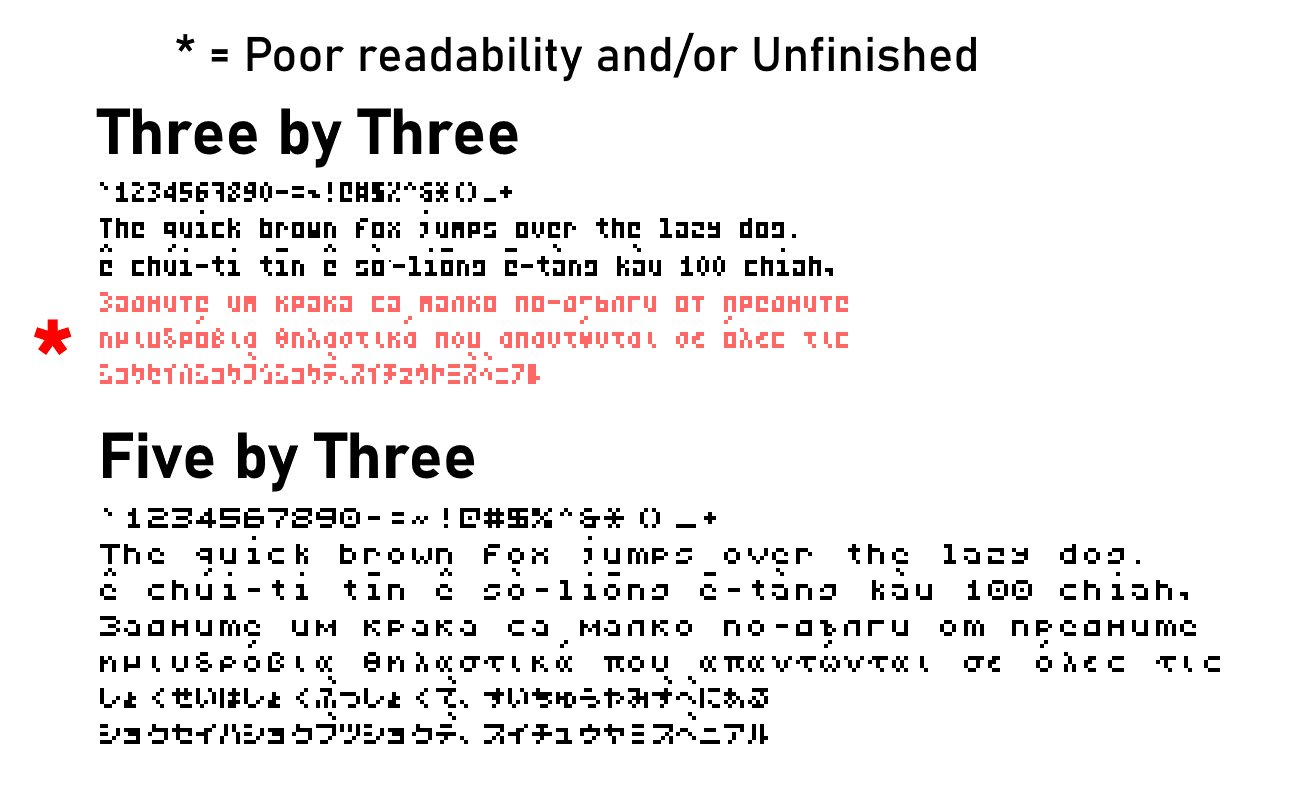This is where I talk about stuff I'm trying to do because I find it interesting.
For the first two pixel fonts I made, I set intentional restraints/limitations of a fictional computer system. Not including the one pixel of spacing between all letters, the first has 3x5 letter bodies, and the second has 5x5 letter bodies. I tried to maintain case distinction whenever possible; generally uppercase letters are 5 pixels tall while lowercase letters are 4 pixels tall, but lowercase letters with ascenders can be 5 pixels tall. Initially I'd made diacritics ignore these limitations, but then I decided to give them their own rules; diacritics can occupy a two-pixel tall space above or below the letter body (again with one pixel of separation). There is only one diacritic row between lines, so a limitation of this system would be that a letter with a lower diacritic (like ç) cannot be directly above a letter with an upper diacritic. In lowercase i and j the tittle always goes in the diacritic slot, so that it can be replaced by diacritics (or removed in the case of dotless ı).
All fonts support some extended Latin. 5x5 additionally supports Cyrillic, Greek, Hiragana & Katakana. 3x5 has some experimental attempts at Cyrillic, Greek, Katakana, and linear Hangul, but the resolution is too low for them to be legible.
